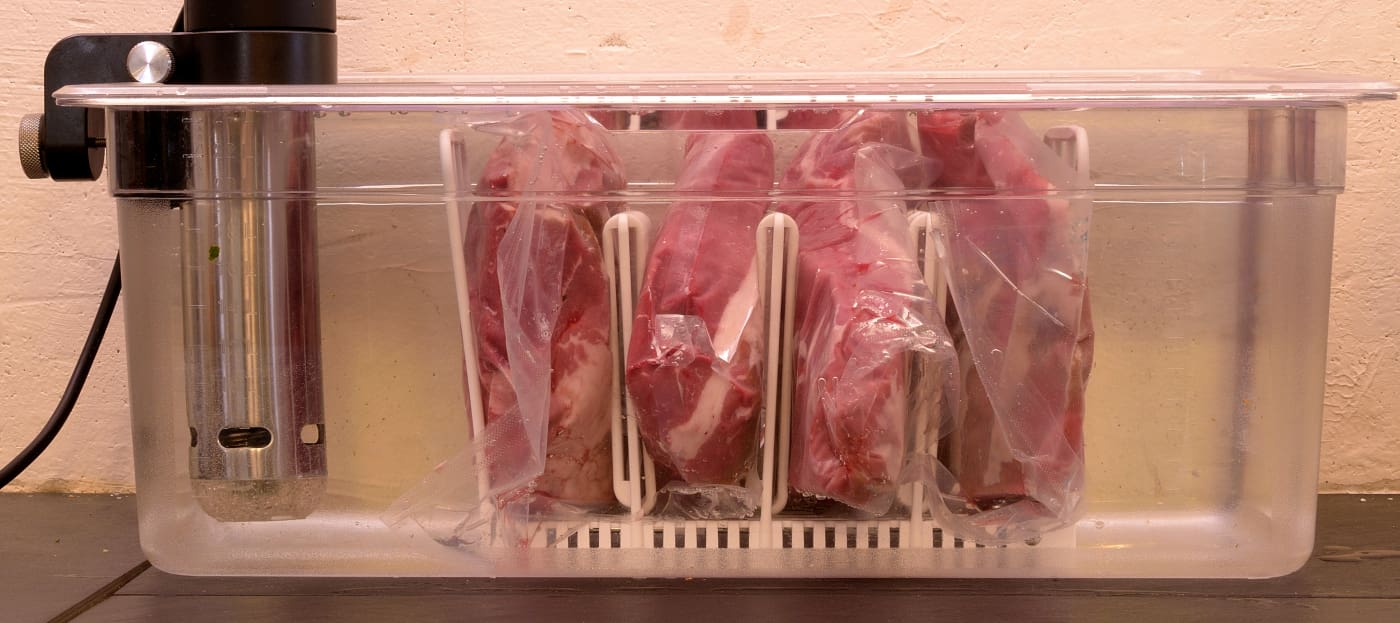
Above: Lipavi C20 container, N20 polycarbonate rack. Lipavi C20L lid.

We originally started with a whole brisket, approximately 14 lbs/6 Kg. The point is to the left, the flat to the right. Be sure to visit the first three articles in this series, linked below:
Part 1–the flat, Part 2–the point, and Part 3–the center cut.
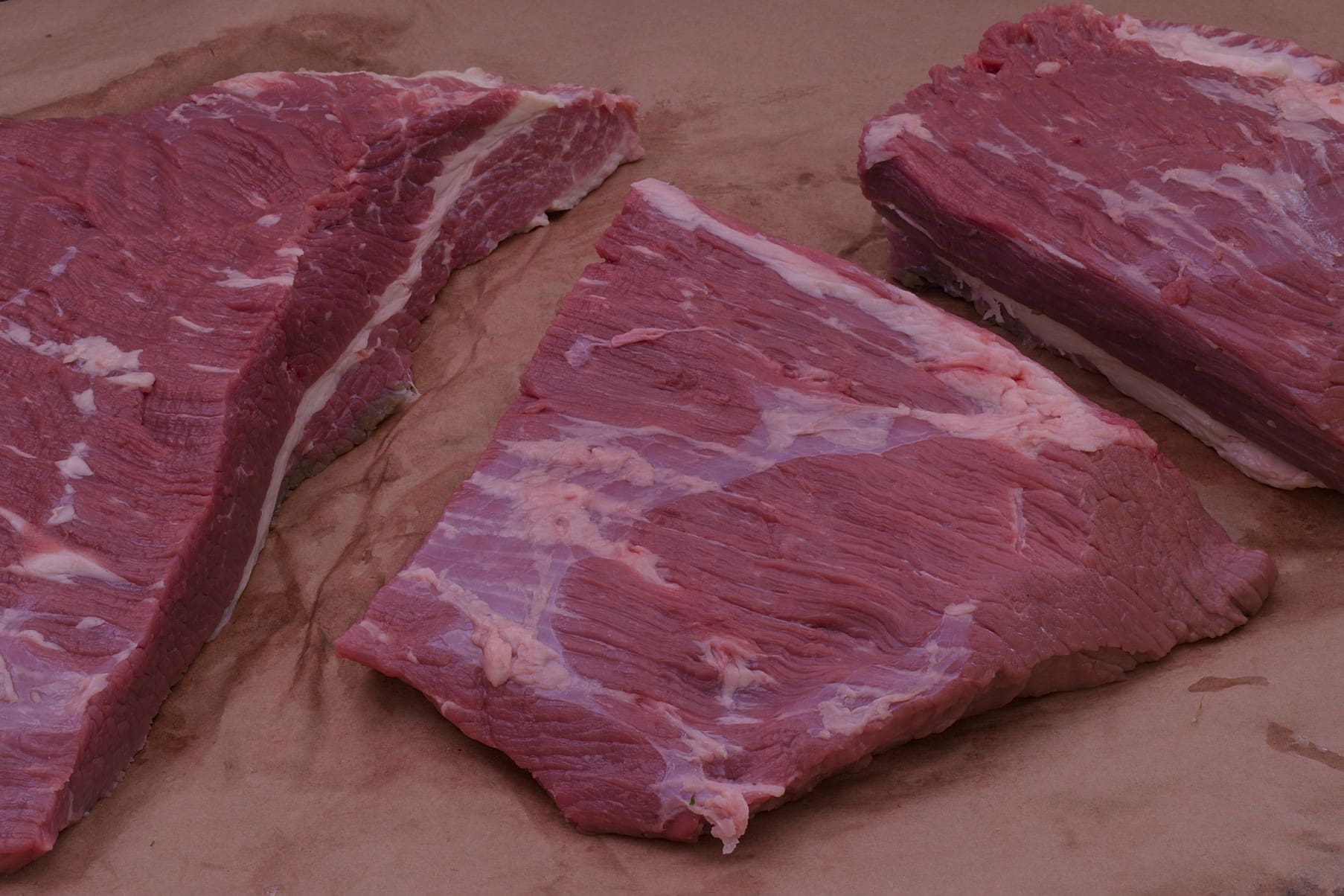
In this episode, we utilized the 3 lb/1.5 Kg center cut section of flat closest to the point. Because of the angle we used to cut this piece, it contains a negligible amount of the outer pectoral (point).
Serves 4-6
Level of difficulty: 2.75
Procedure:
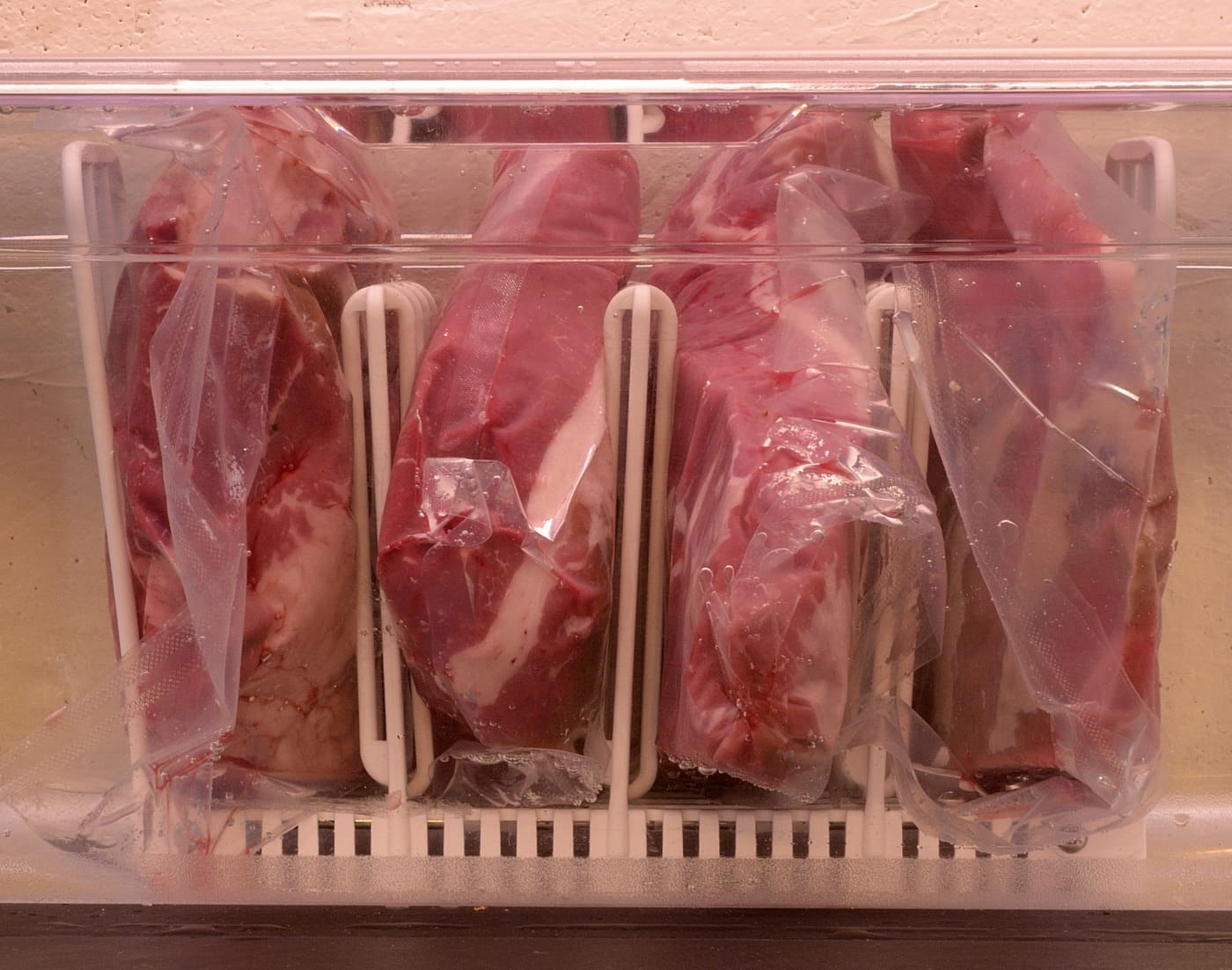
Processing
After vacuum sealing in heat rated plastic bags, all the sections of beef brisket in this series were processed at 140 F/60 C for 48 hours to fully tenderize/pasteurize. We then cold shocked the sealed packages in iced water until they achieved 70 F/21 C and refrigerated at 40 F/4 C. The roast can remain safely refrigerated in this state for at least two weeks.
Always Harvest the Sous-Jus
In the first three episodes we explain how to utilize the juices from the bag–they can provide a lot of flavor to sauces and soups. They also contain large amounts of myoglobin and albumins that should be removed. Once clarified, the consommé can be kept refrigerated for future use.
The Cold Start
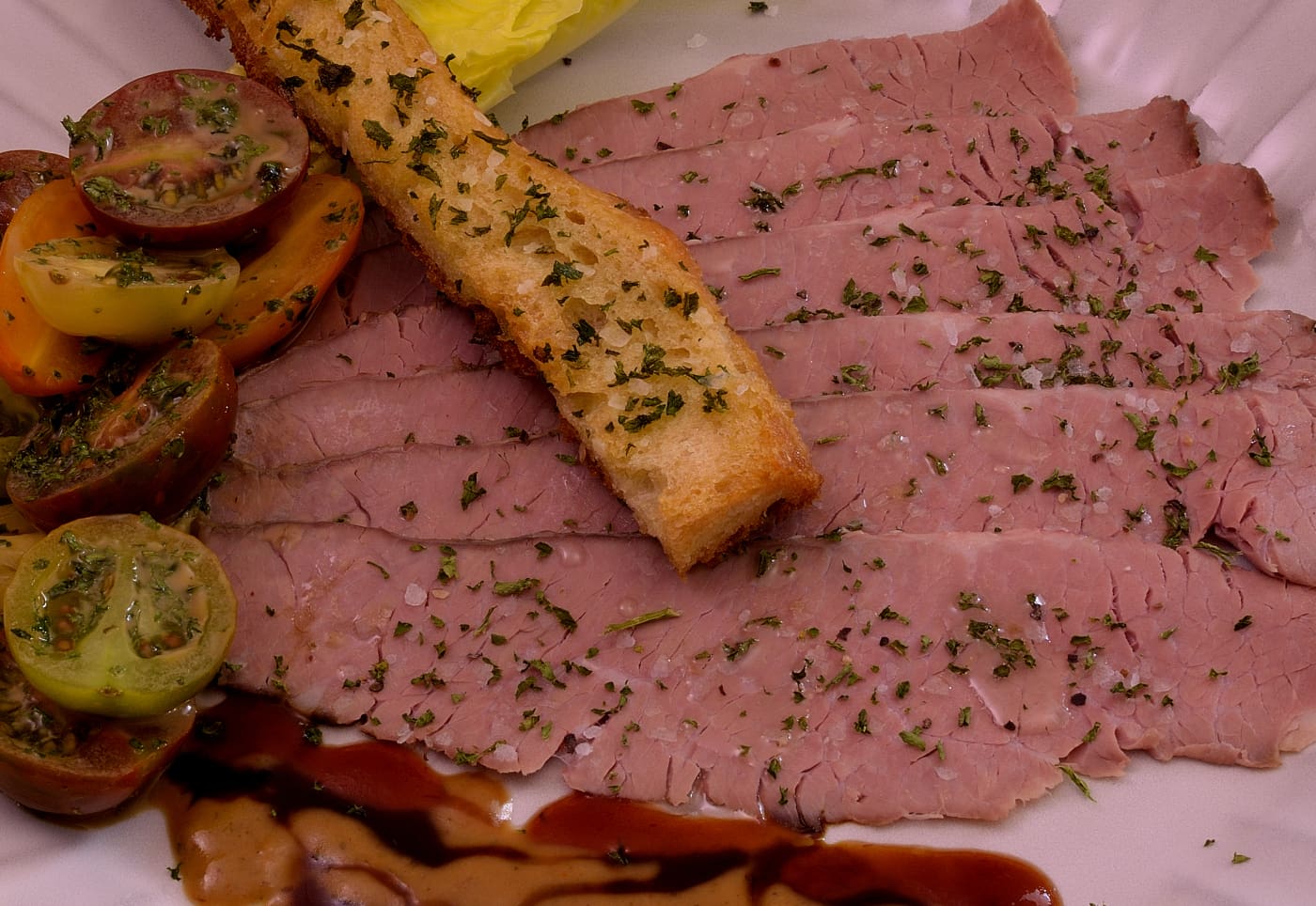
In our eagerness to impress our friends with our newfound proficiencies, it is easy to forget just how good cold sliced beef can be. Since the brisket never exceeded 140 F/60 C, some pink color will still be evident. Decorate with a few cherry tomatoes in a Balsamic vinaigrette with baguette crisps. The sauces are from our recipe file assortment linked HERE.

Even though the brisket still remains unseasoned, we already know that only salt can penetrate the surface in any meaningful way–see the science behind that HERE.
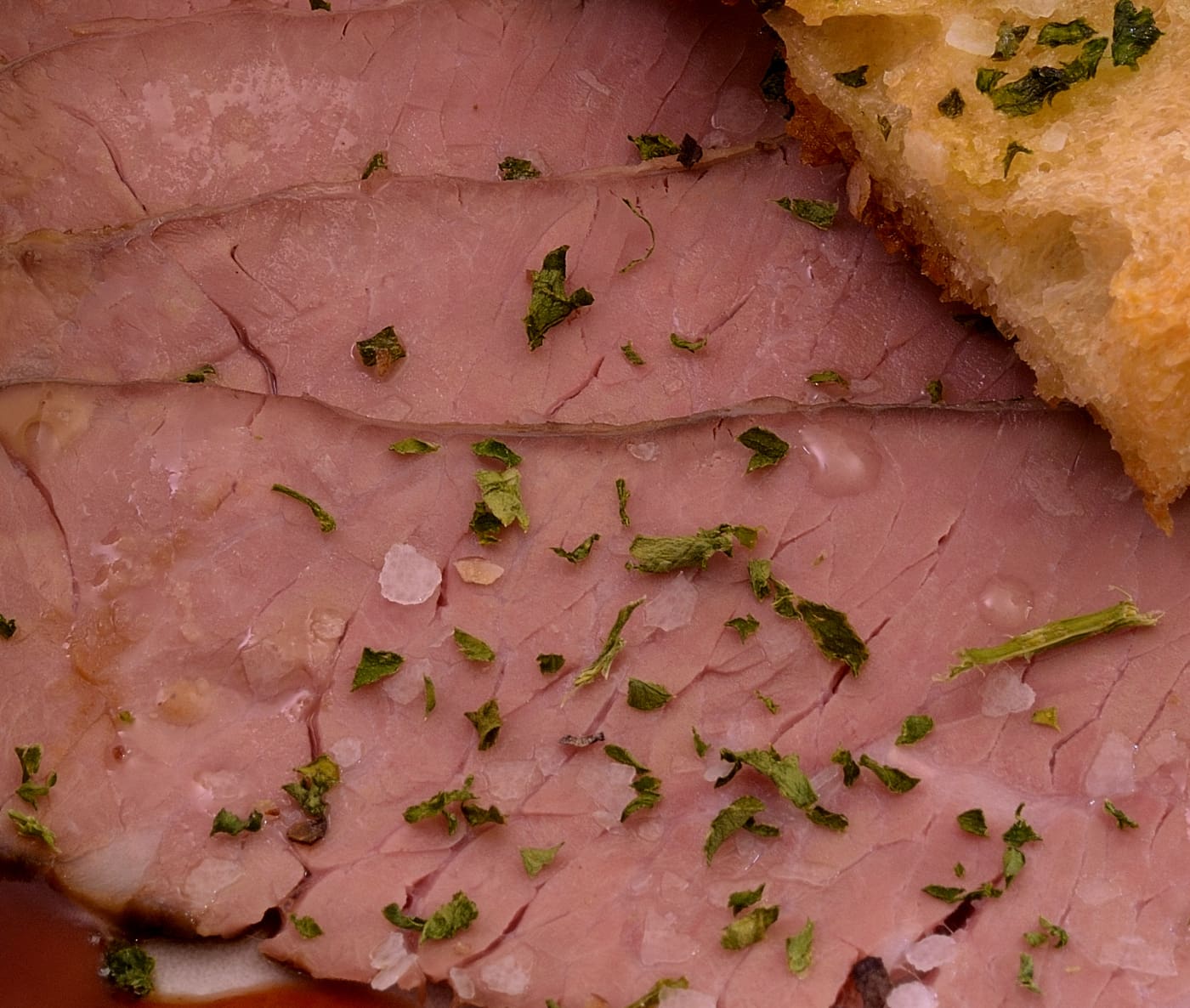
Sprinkled with a little kosher salt and drizzled with extra virgin olive oil, you can achieve an almost “Carpaccio” type of result–albeit a much safer pasteurized one.
Steak your claim and claim your steak
Since sous vide processing preserves so much more moisture than traditional methods, it can actually be cut into a steak and grilled or seared.
This model is a sort of hybrid between the iconic “chicken fried steak” and a so-called (but misnamed) “Swiss steak.” After dusting the thick cut strip with powdered egg white and misting with a bit of water, the steak is rolled in the breading mix noted in the ingredients section–basically a biscuit dough without the milk. After allowing to rest briefly to allow the seasonings to cling, the cut is simply pan fried at 275 F/135 C on all sides enough oil to coat the bottom of the pan.
In the picture, steamed cabbage tossed in a Sous-Jus butter sauce and a few drops of demi-glace (or your favorite version of brown or cream gravy). The Peruvian purple potatoes are becoming more commonly available in local markets–usually mixed with other colors and labeled “fingerlings”.
The WOW factor
After breading as explained above, you can flex your creative muscles to suit your own preferences.
For fans of creamed spinach, this version is very easy–simply combine mascarpone or cream cheese with the well drained spinach until you get the color and consistency you want. Heat a plate in the oven and then dollop the spinach mixture–this eliminates the necessity to actually heat the creamed spinach in a pan, thereby risking a watery and dark result.
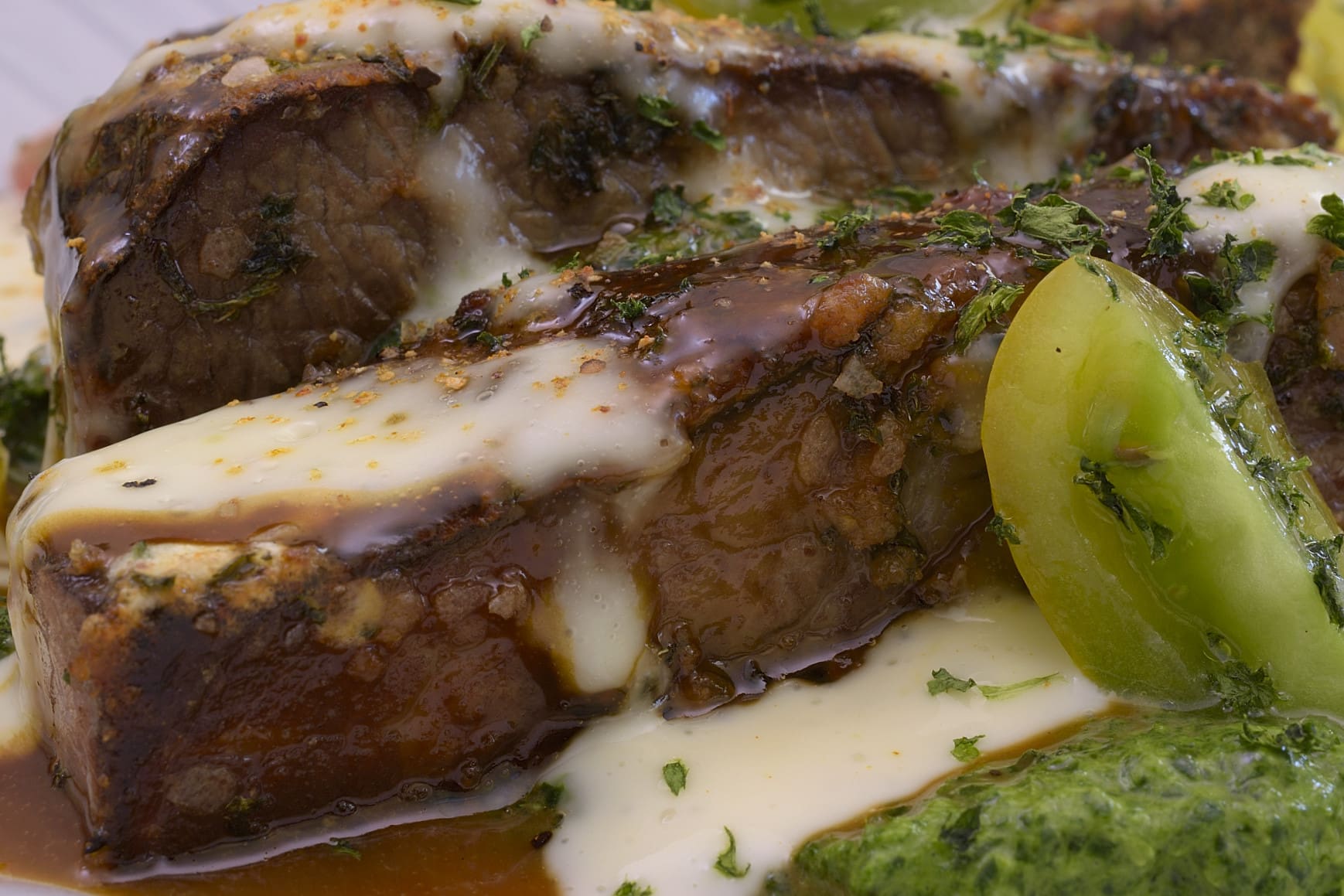
The cream sauce is also a snap. Use a tall container to process the cream in a microwave oven for approximately 90 seconds–it will come to a boil. Keep an eye on it so it doesn’t boil over. Add the cold butter and a pinch of salt. Process in the microwave again for another 90 seconds. The bubbles will grow in size as the butter is dispersed into the continuous phase of the cream. Allow to settle on the counter for two minutes, and then use a stick blender to create the emulsion just is the process is explained HERE. This is a no-brainer version of “alfredo sauce” (without the cheese). The demi-glace is a good thing to keep around–I make it a habit.
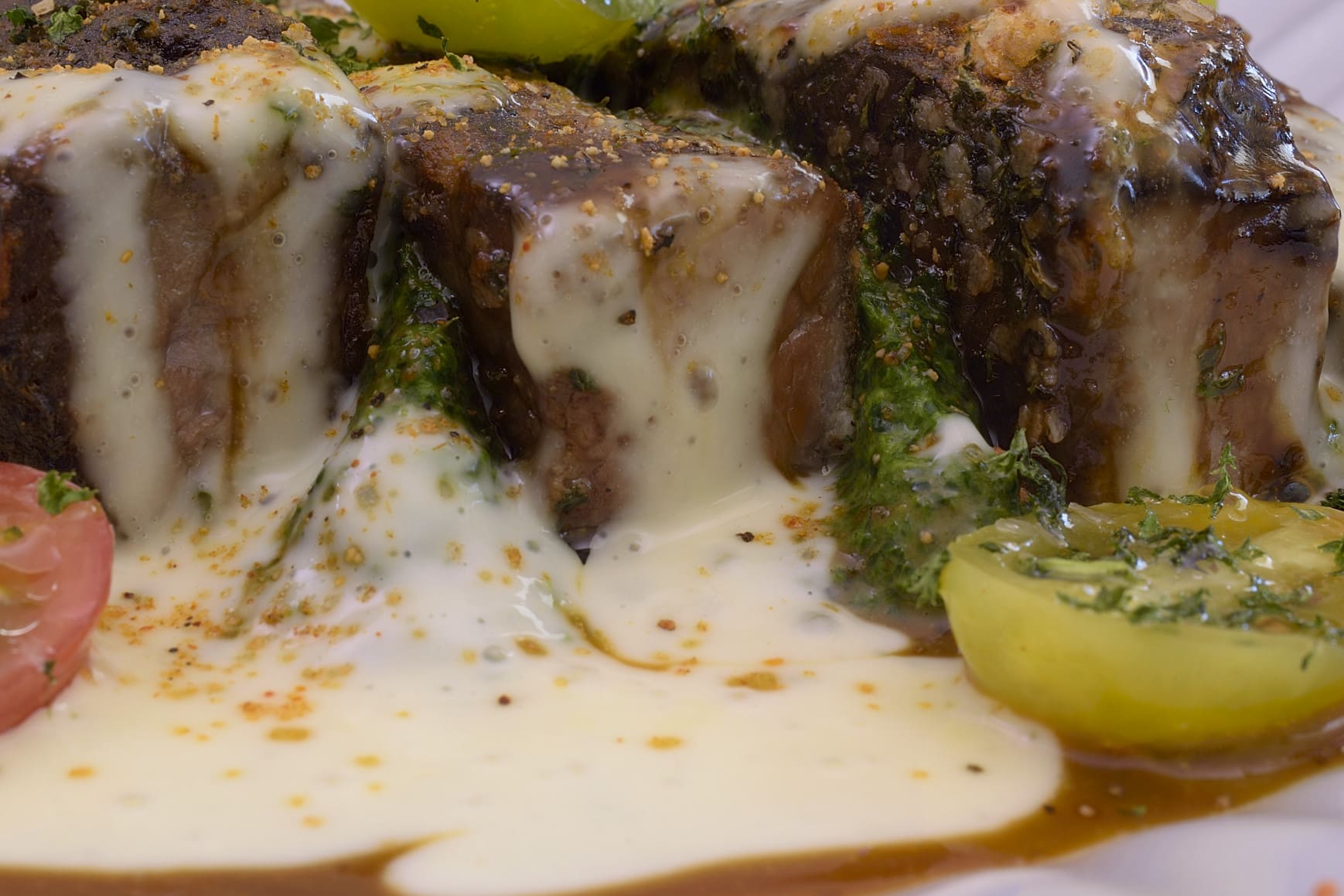
Cherry tomatoes and chopped parsley–also a habit.
Shred like Zakk Wild
No matter how you prepare your brisket, it is inevitable that there will remain some irregularly shaped pieces. These are not “leftovers.” Rather, they are the opportunity to make one of the most popular versions of brisket ever created–PULLED.
Simmer the brisket in a covered pan with just a little water until the meat can be pulled apart into large strips with a fork. Drain, toss with your favorite barbecue sauce and you get something like this.
A sweet potato brings some pizzazz to the flavor profile. For a finer result….
Drain the water from the pan and transfer the meat to a Kitchenaid type mixer with the paddle attachment.
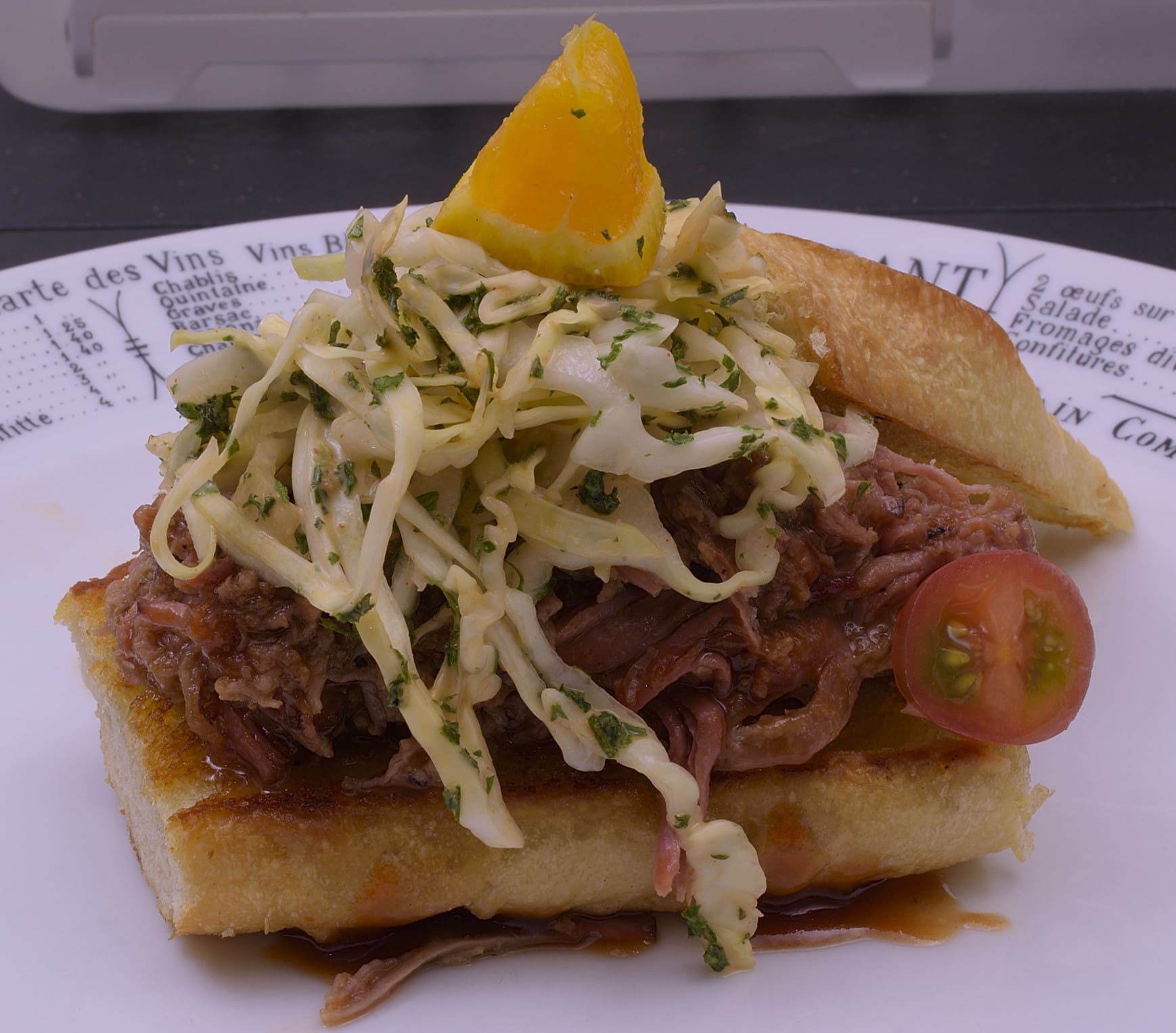
Grilled baguette and some simple coleslaw creates a vibrant sandwich.
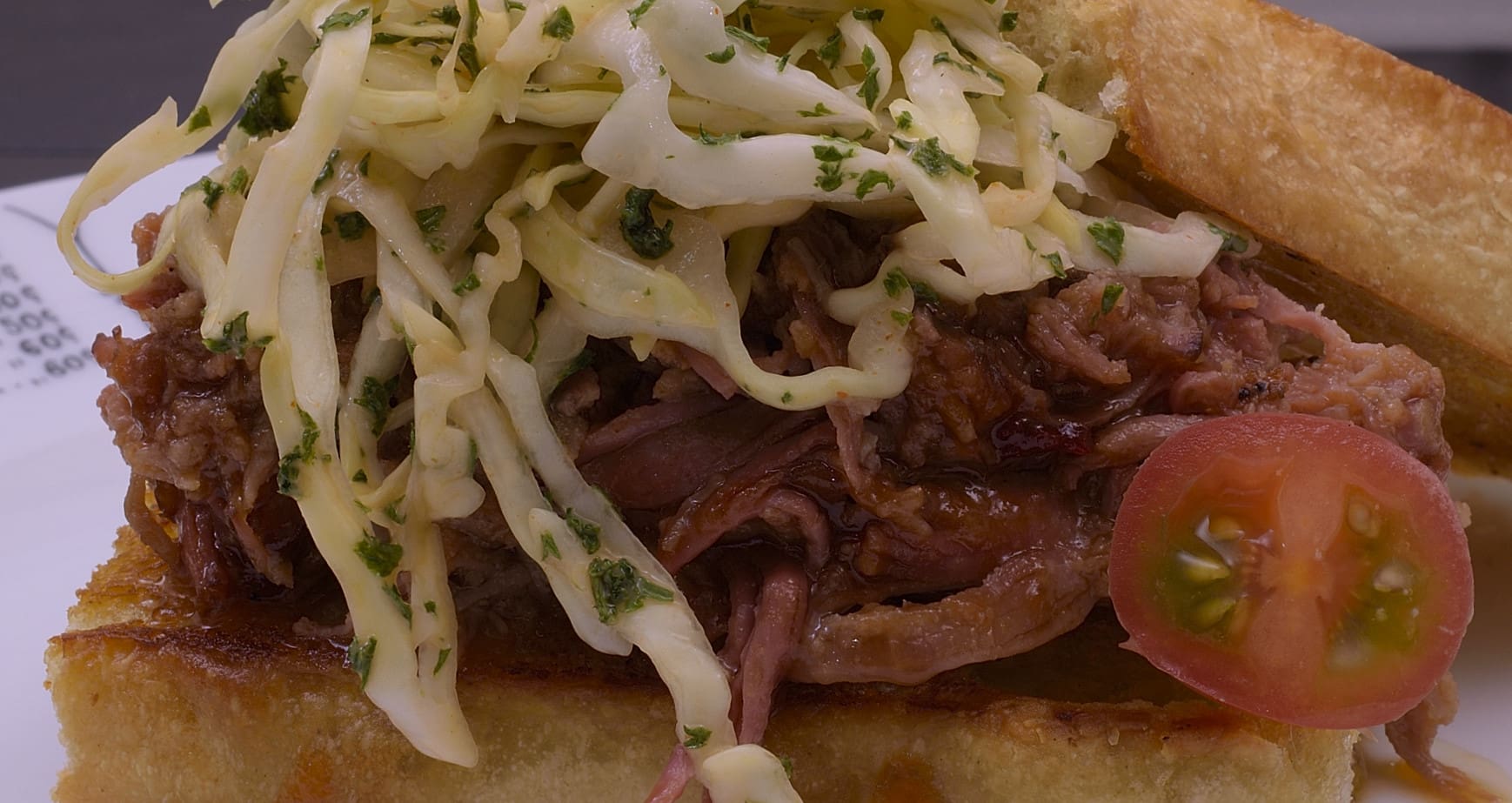
Norm
Click on my name to visit us on FaceBook!
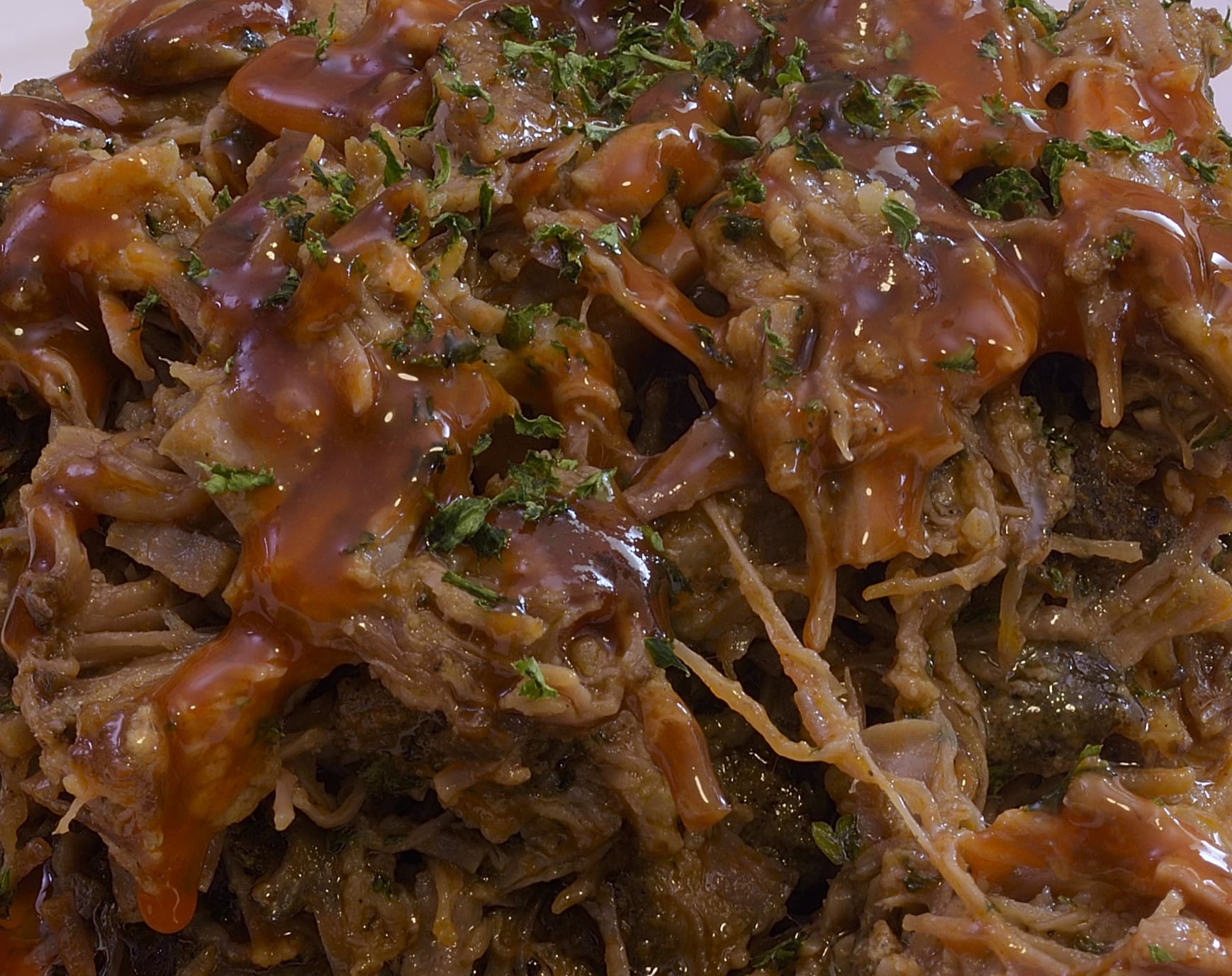
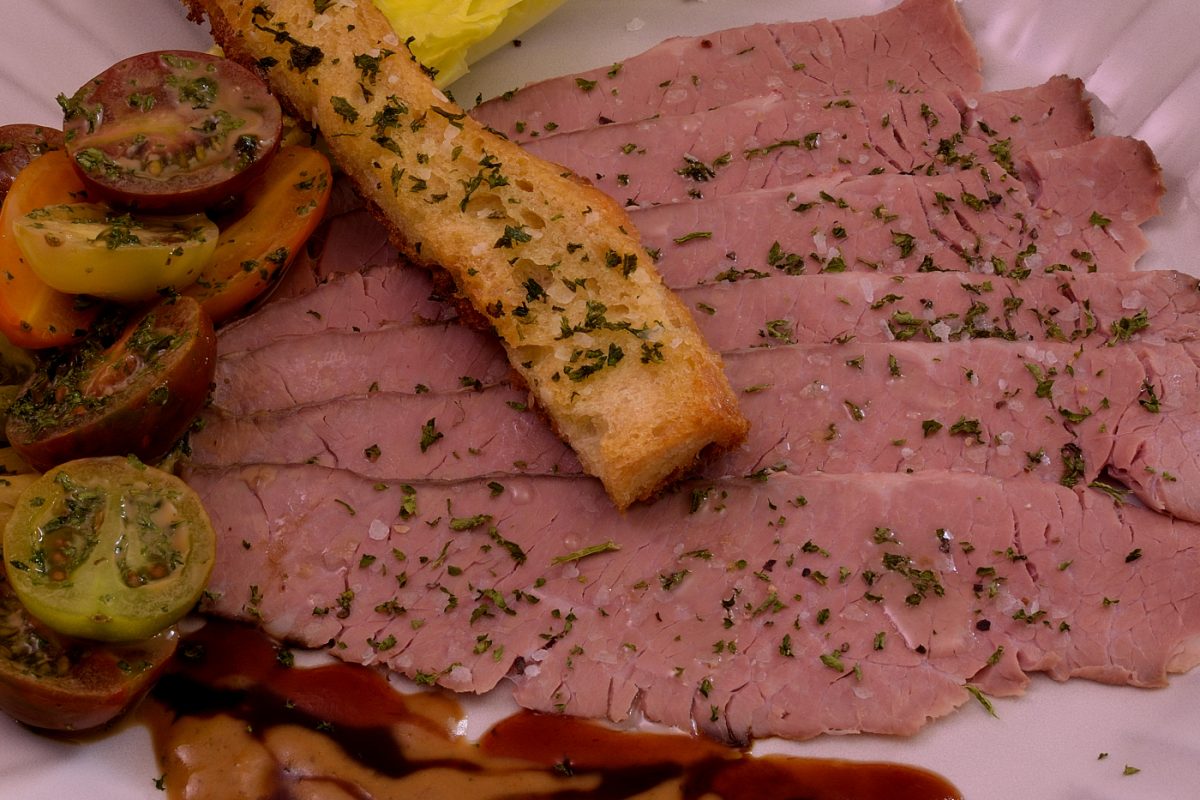
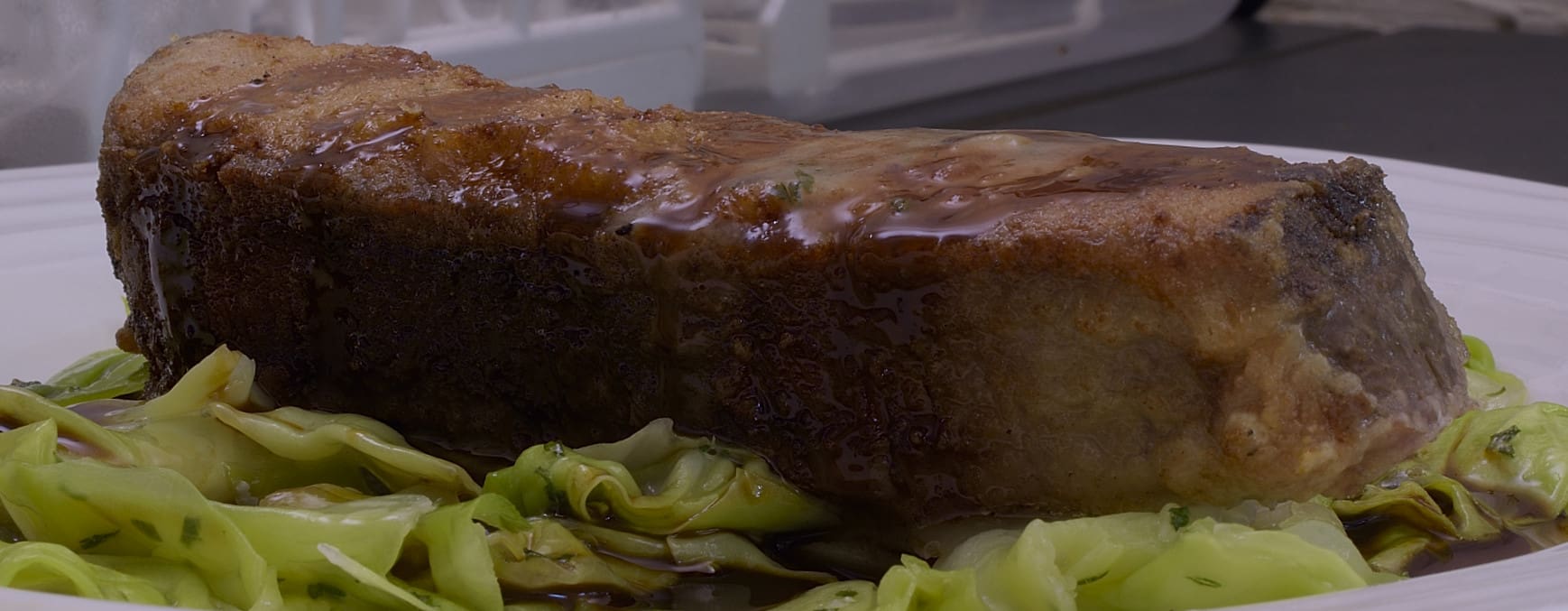
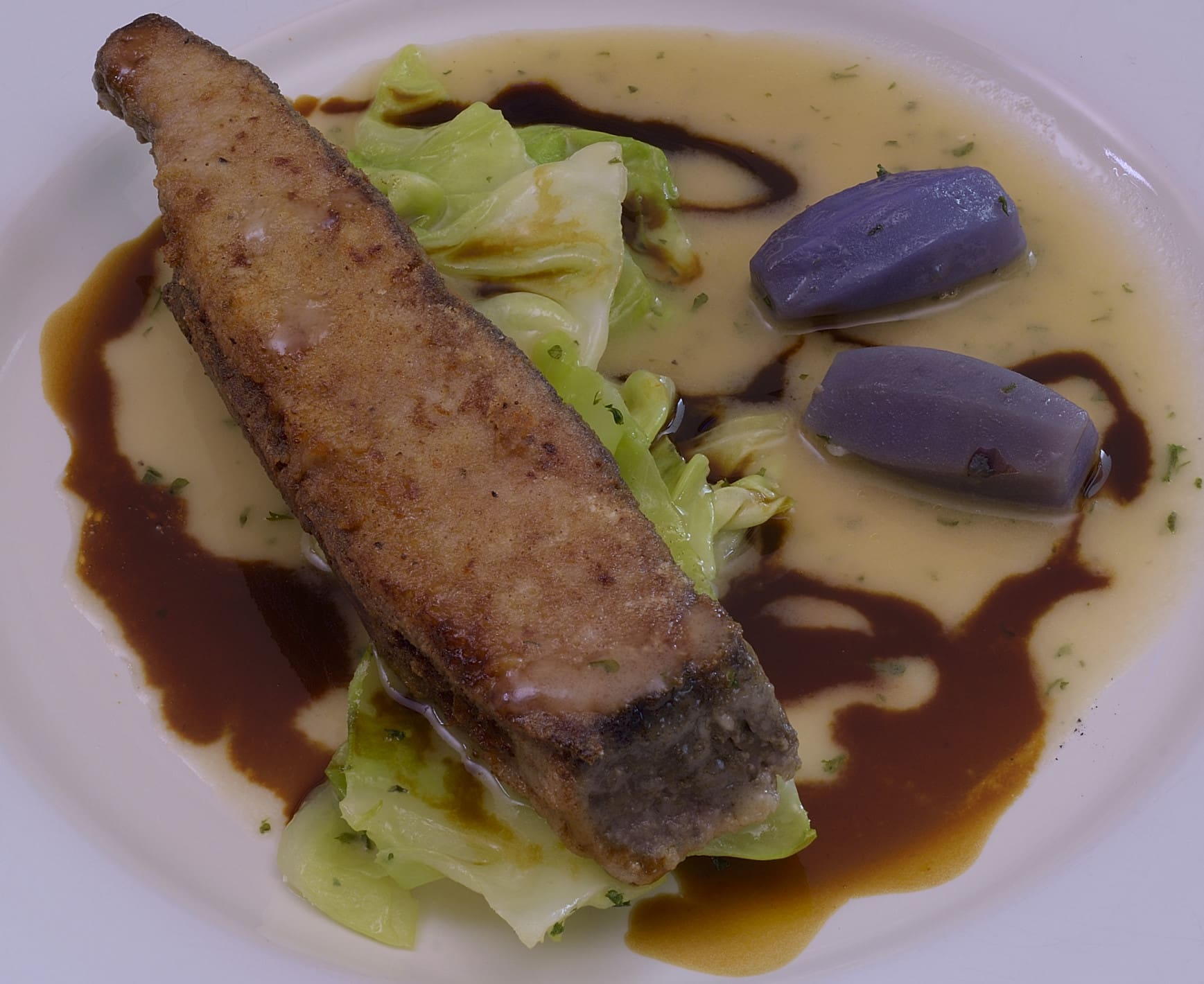
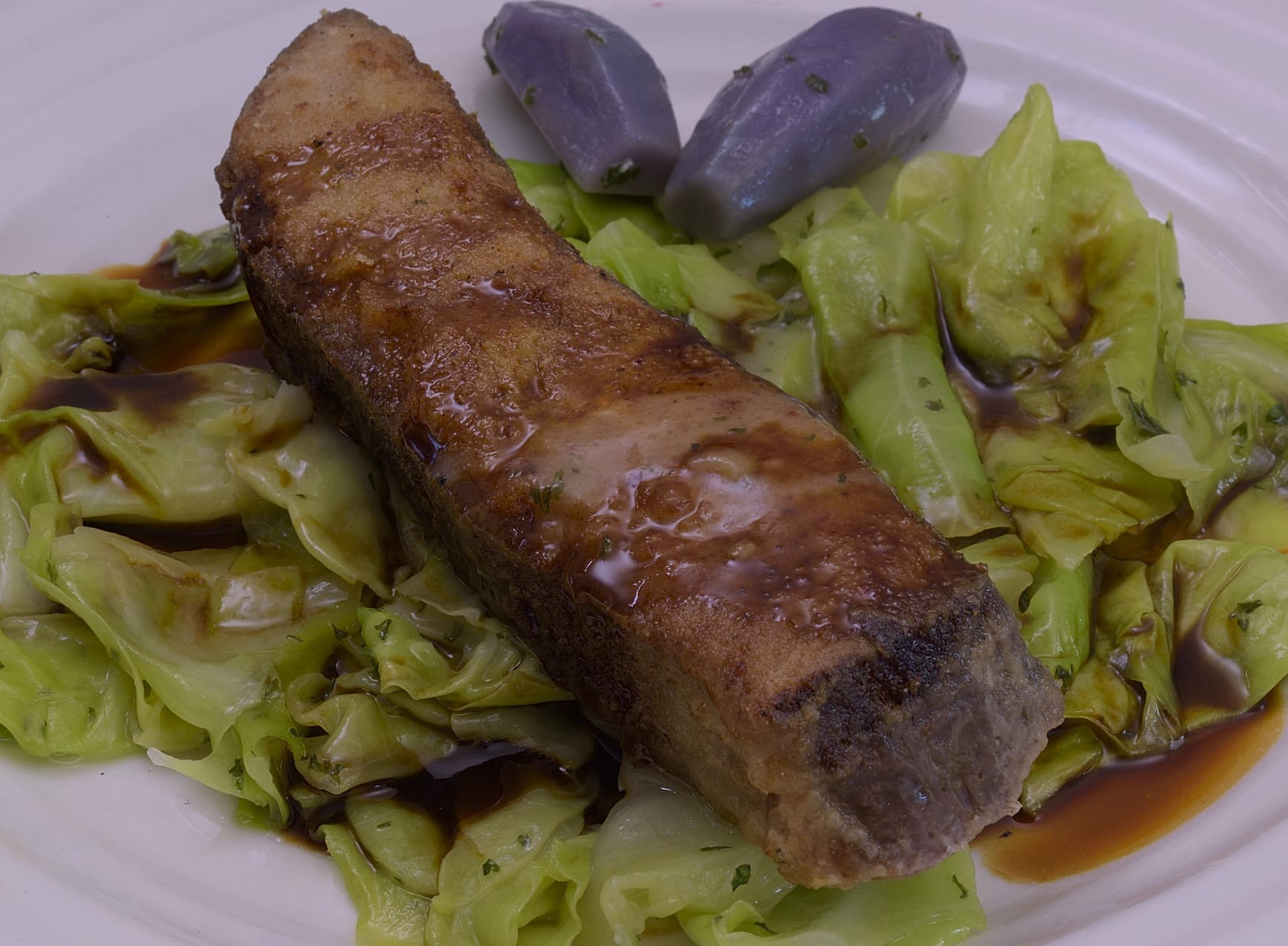
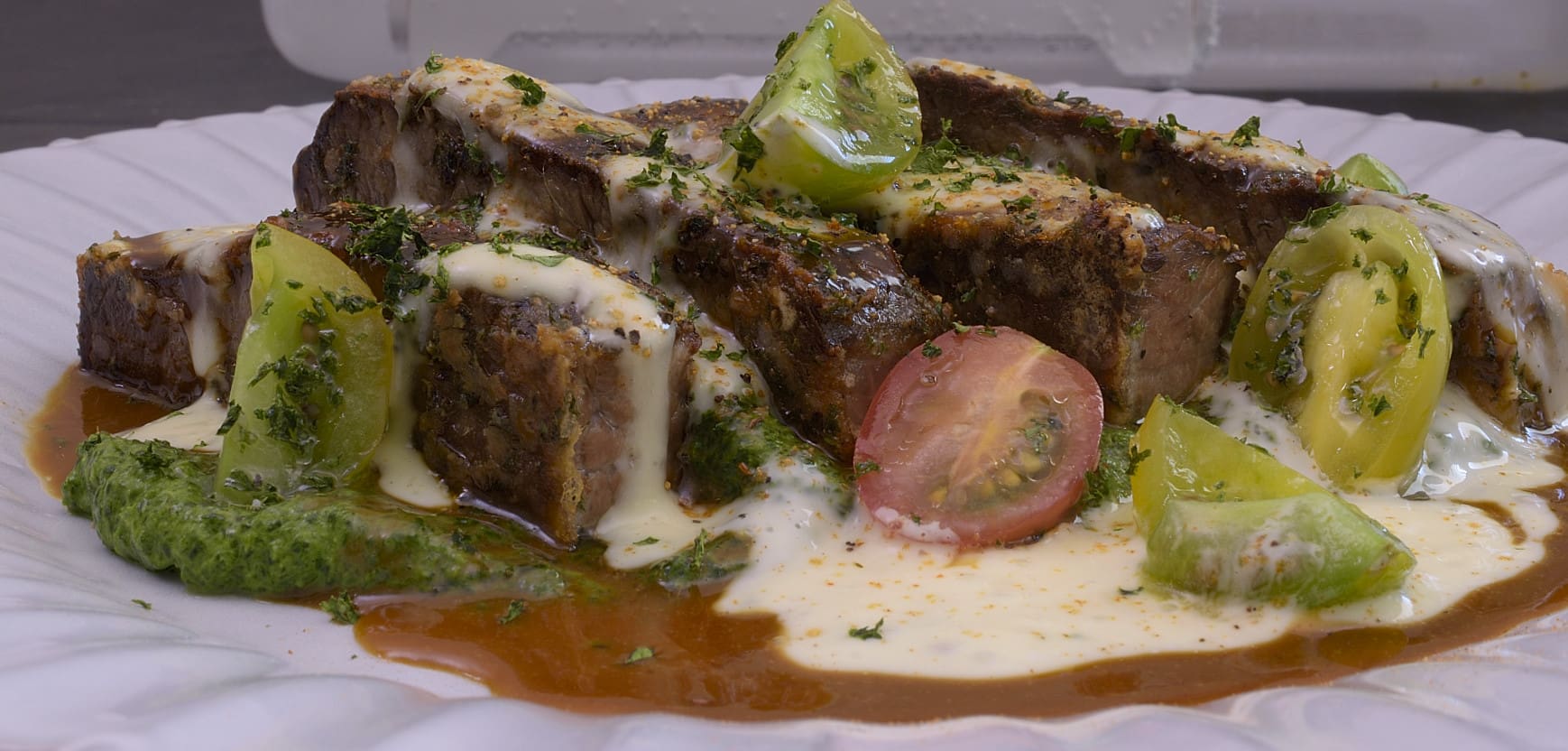
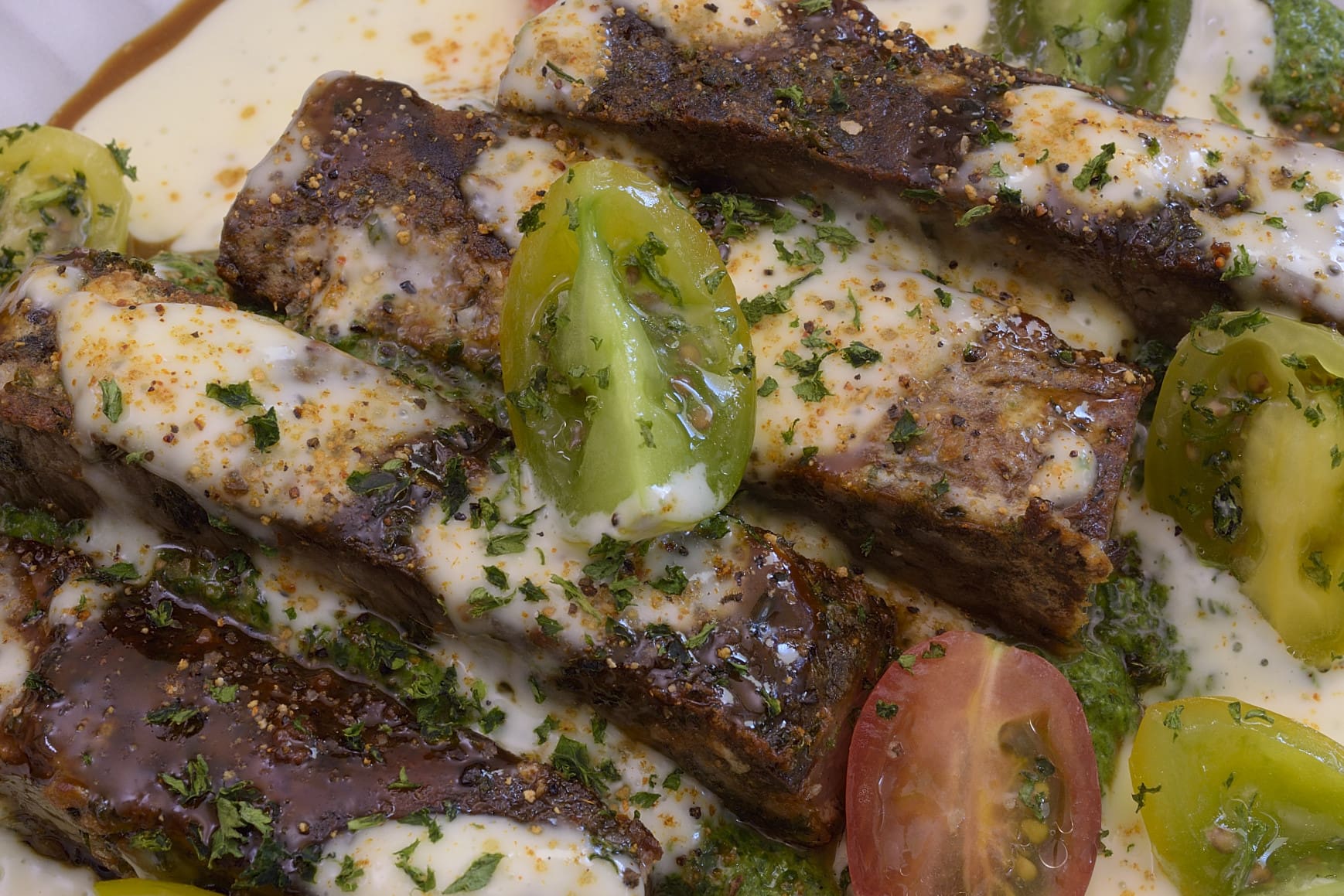
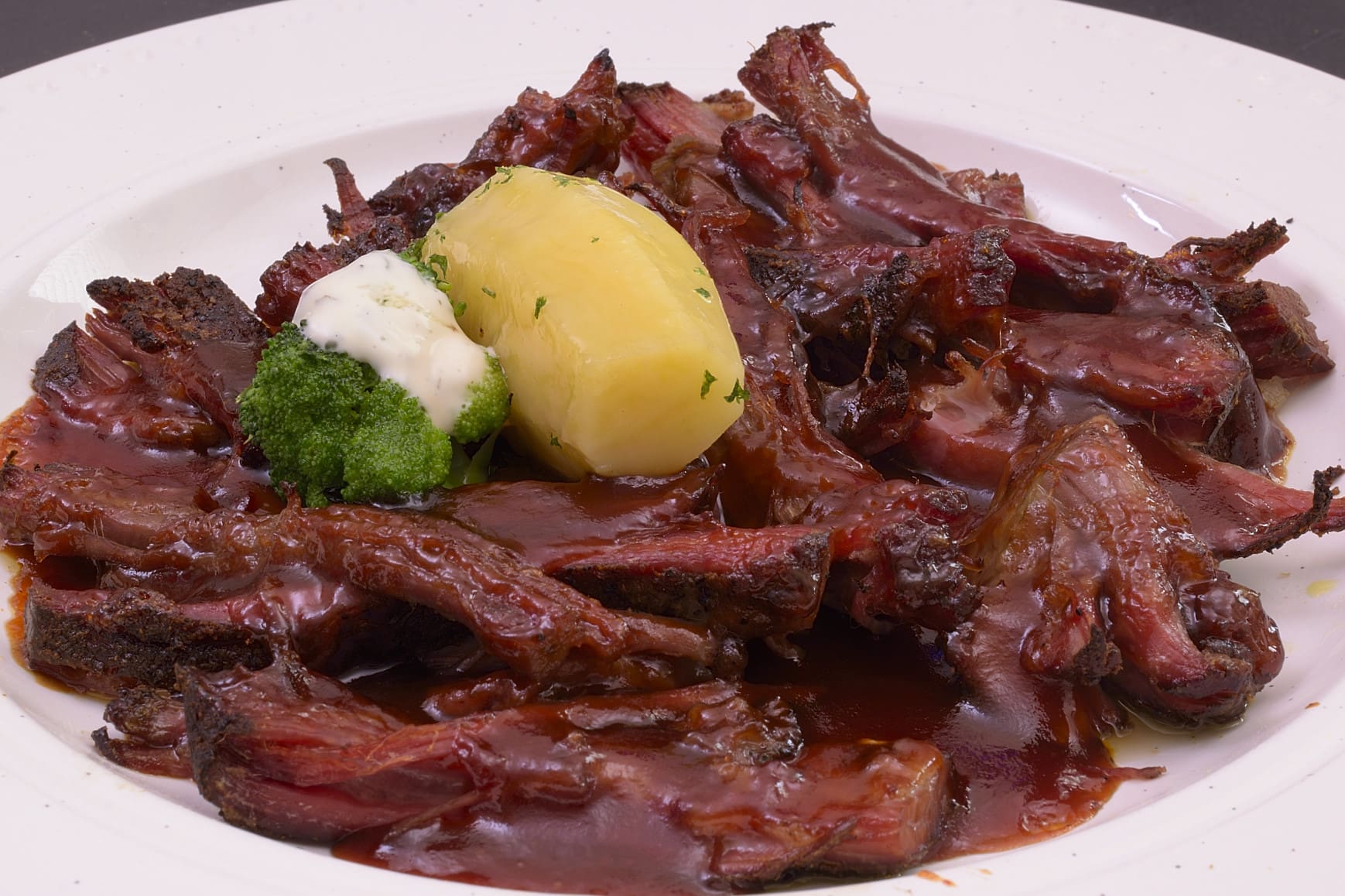
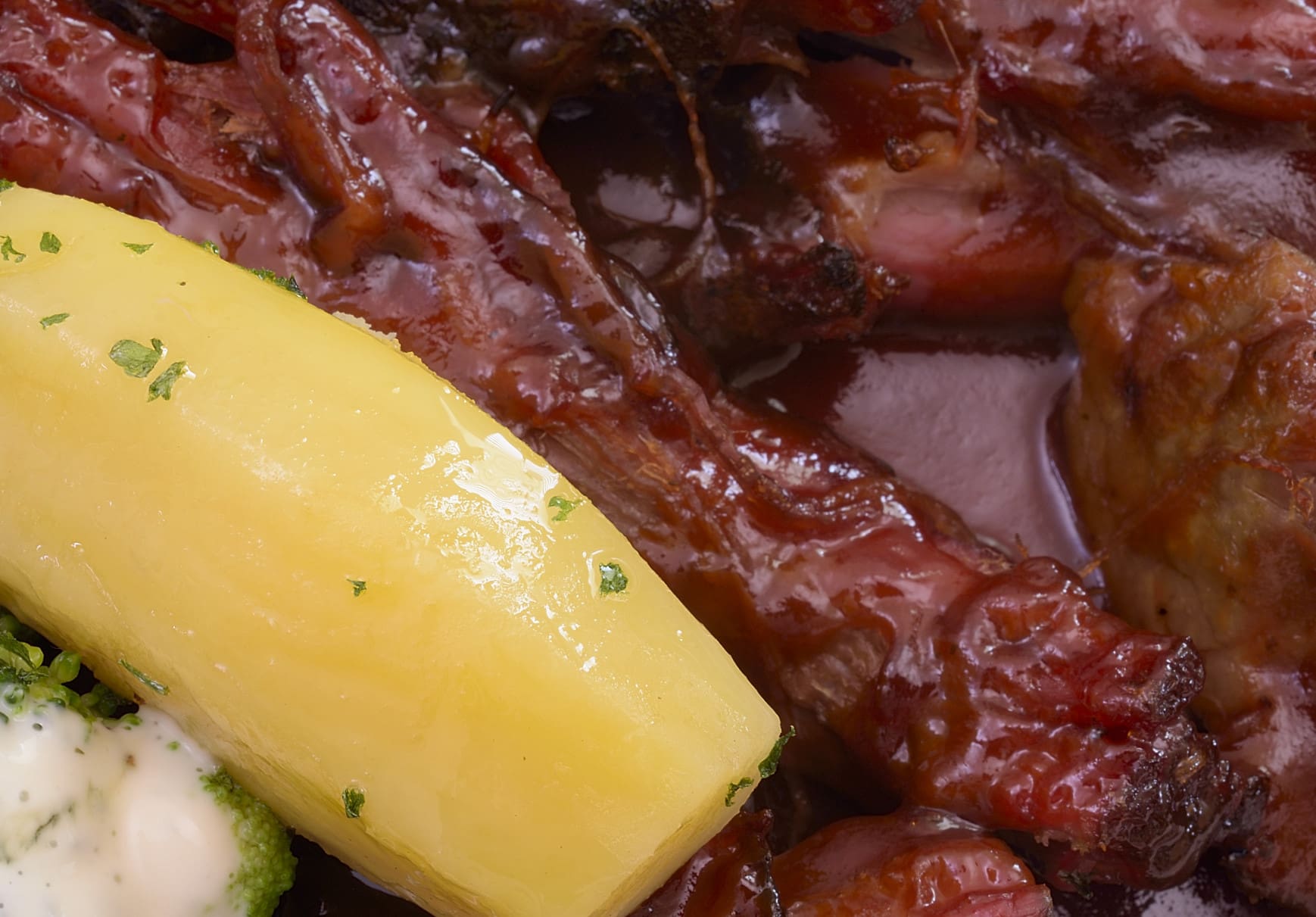
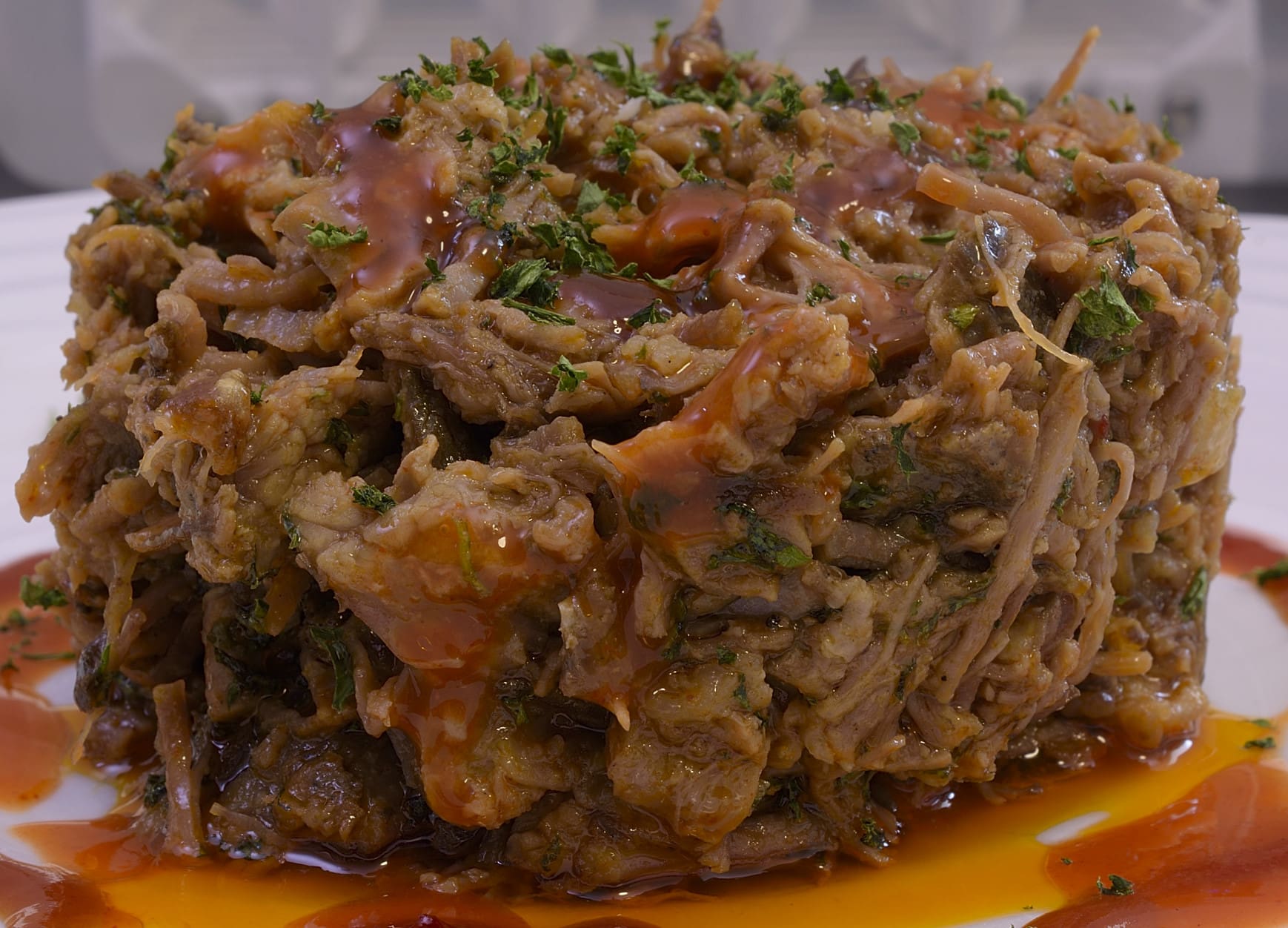
1
1